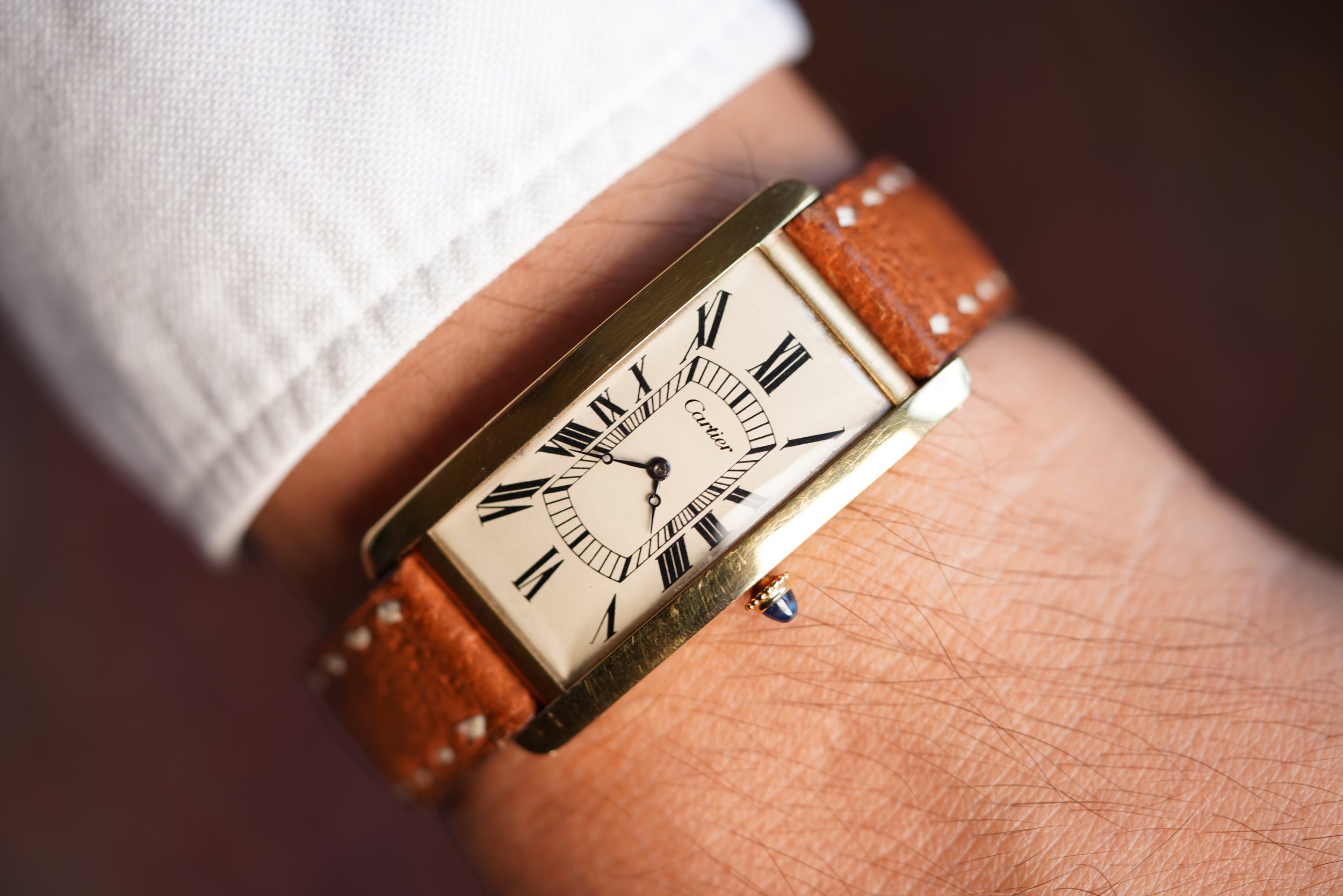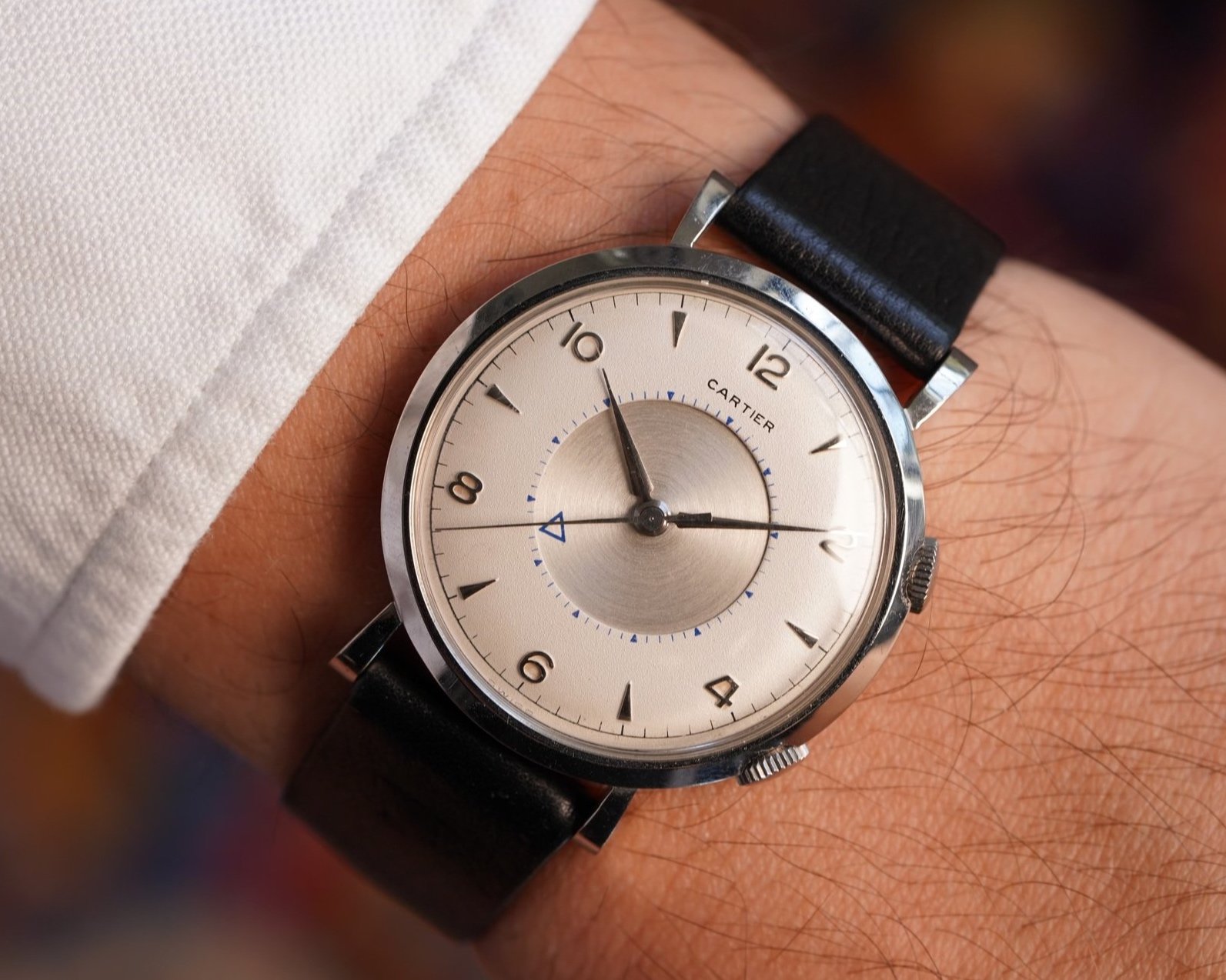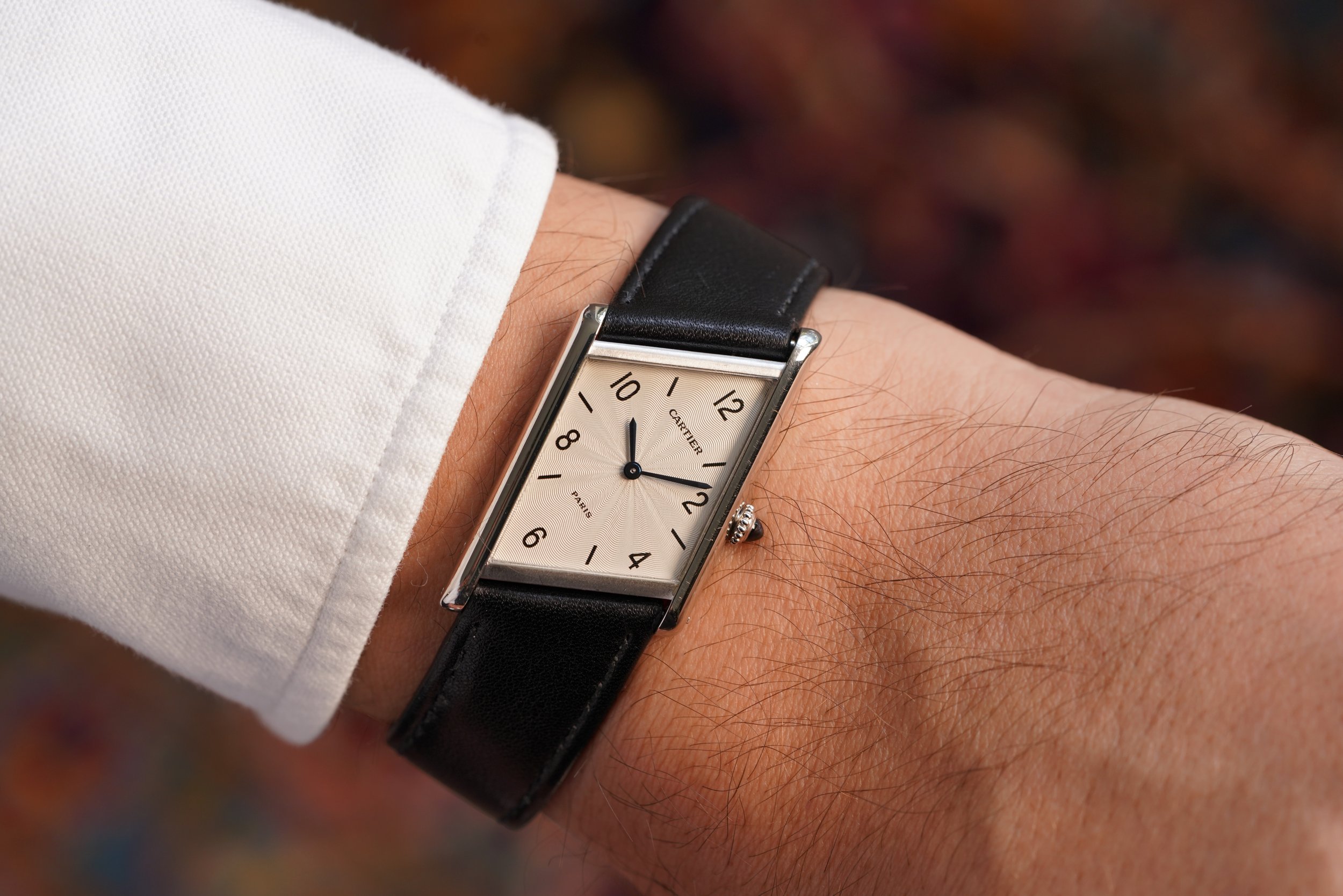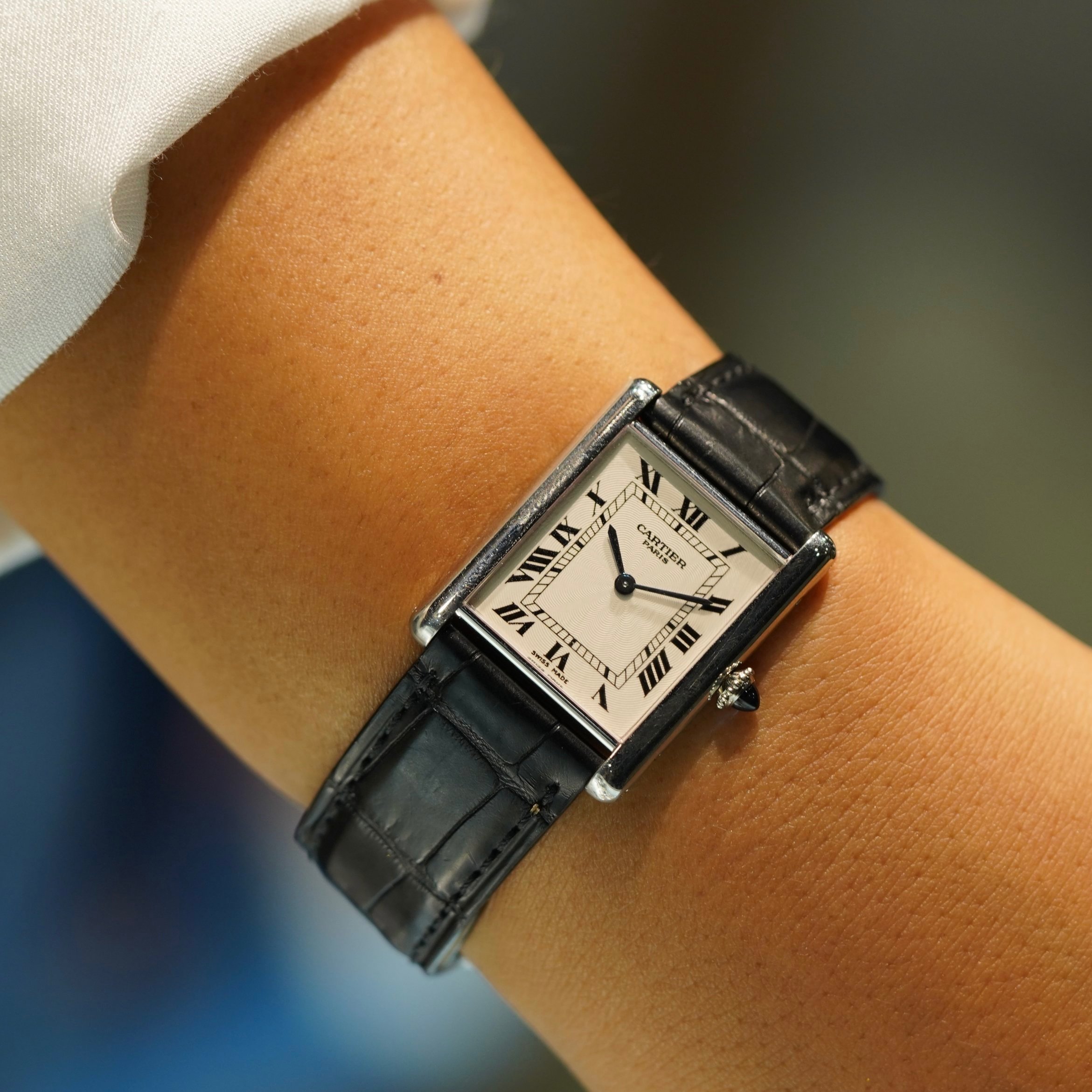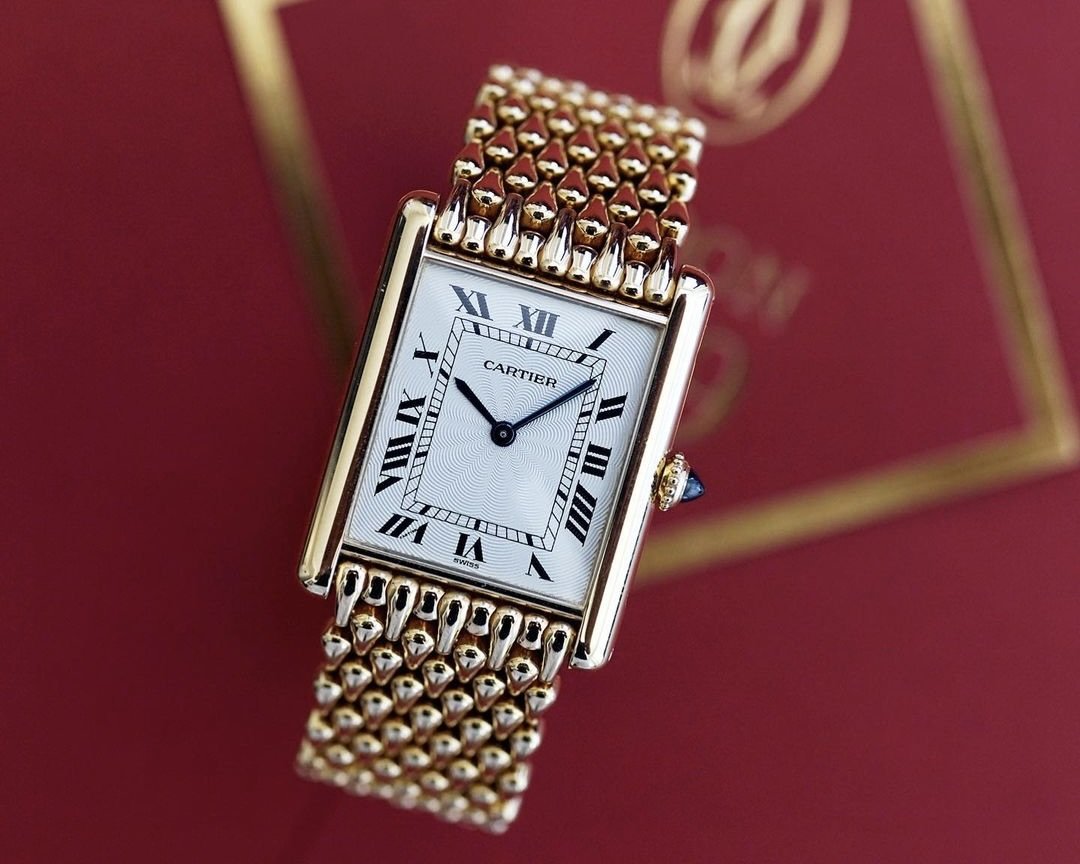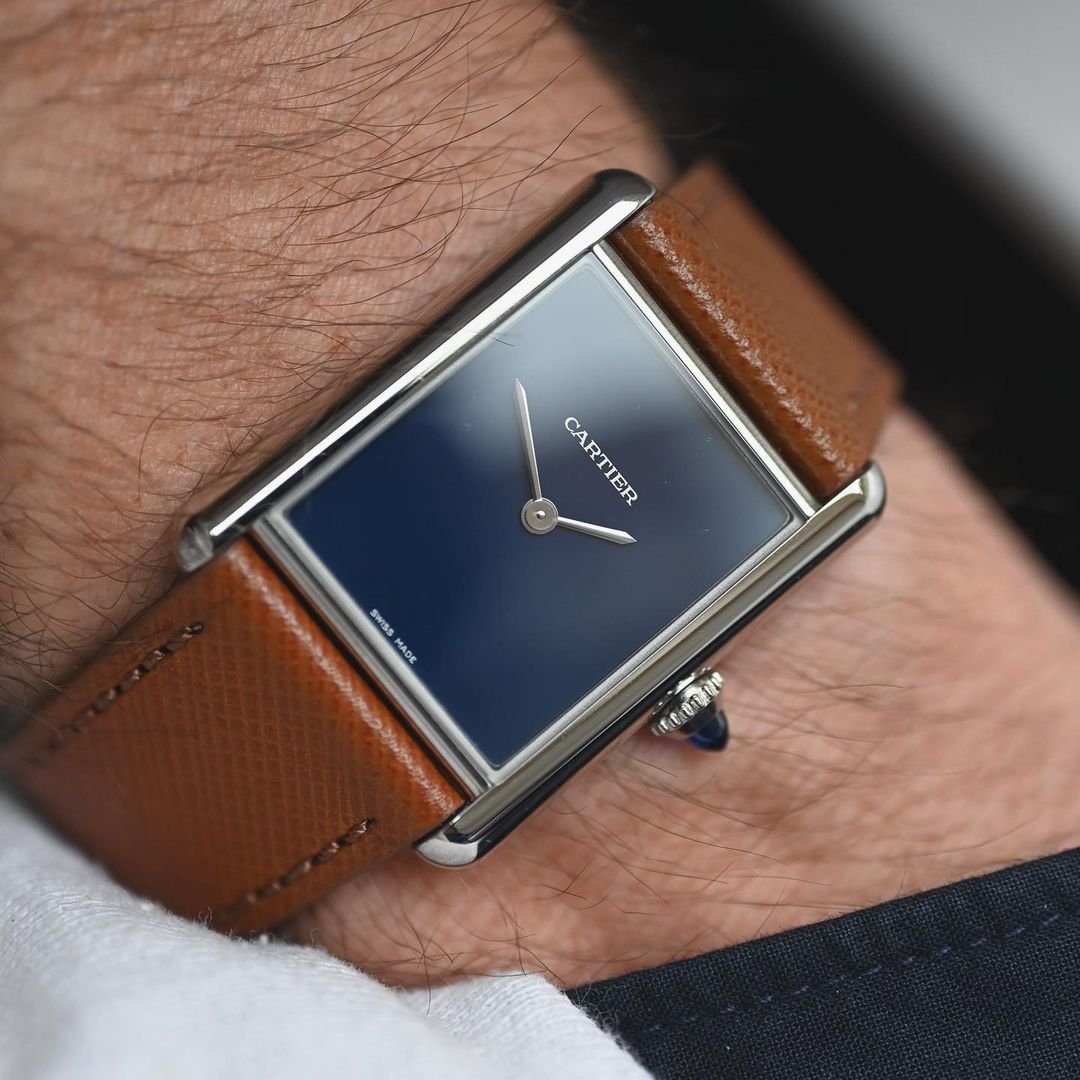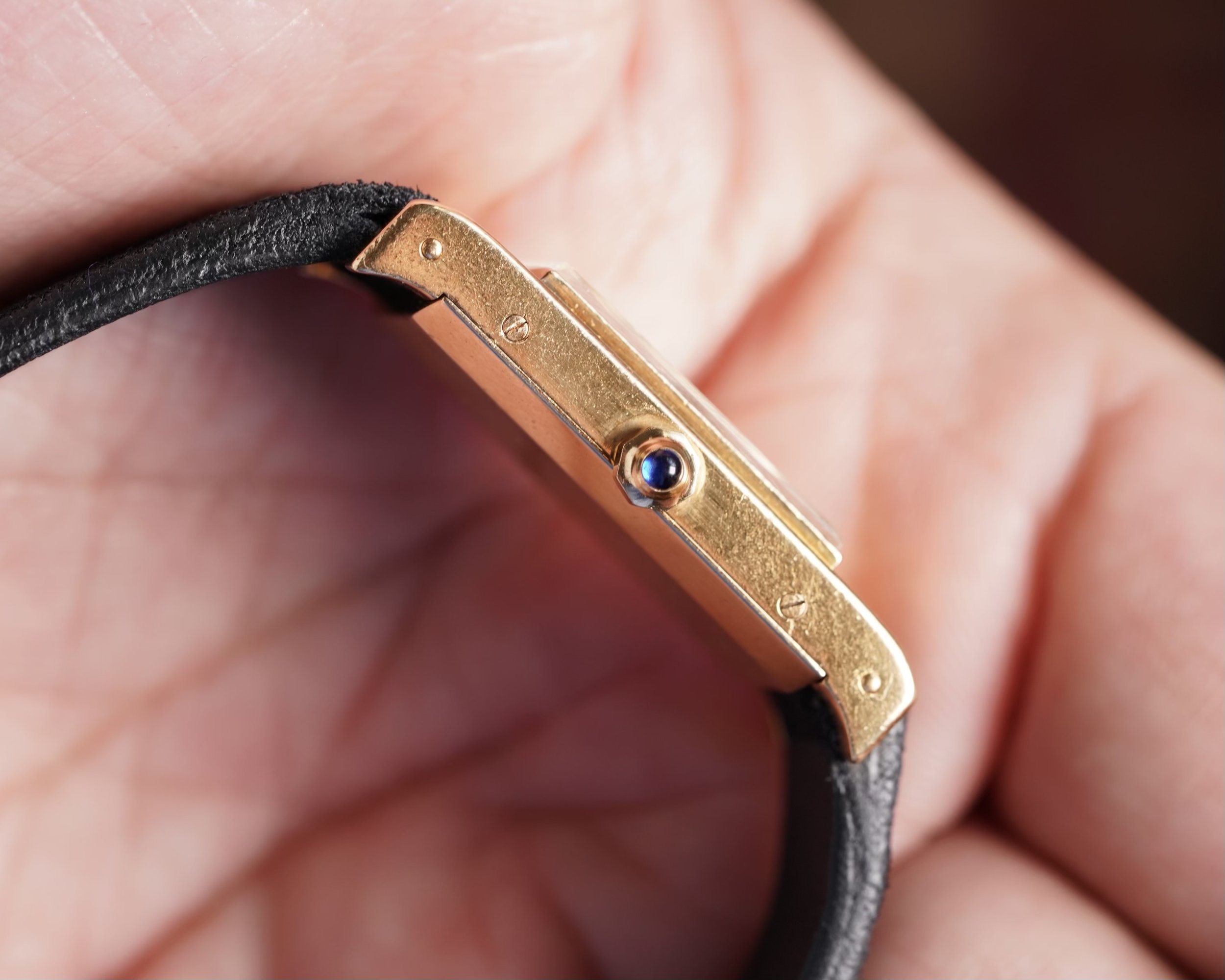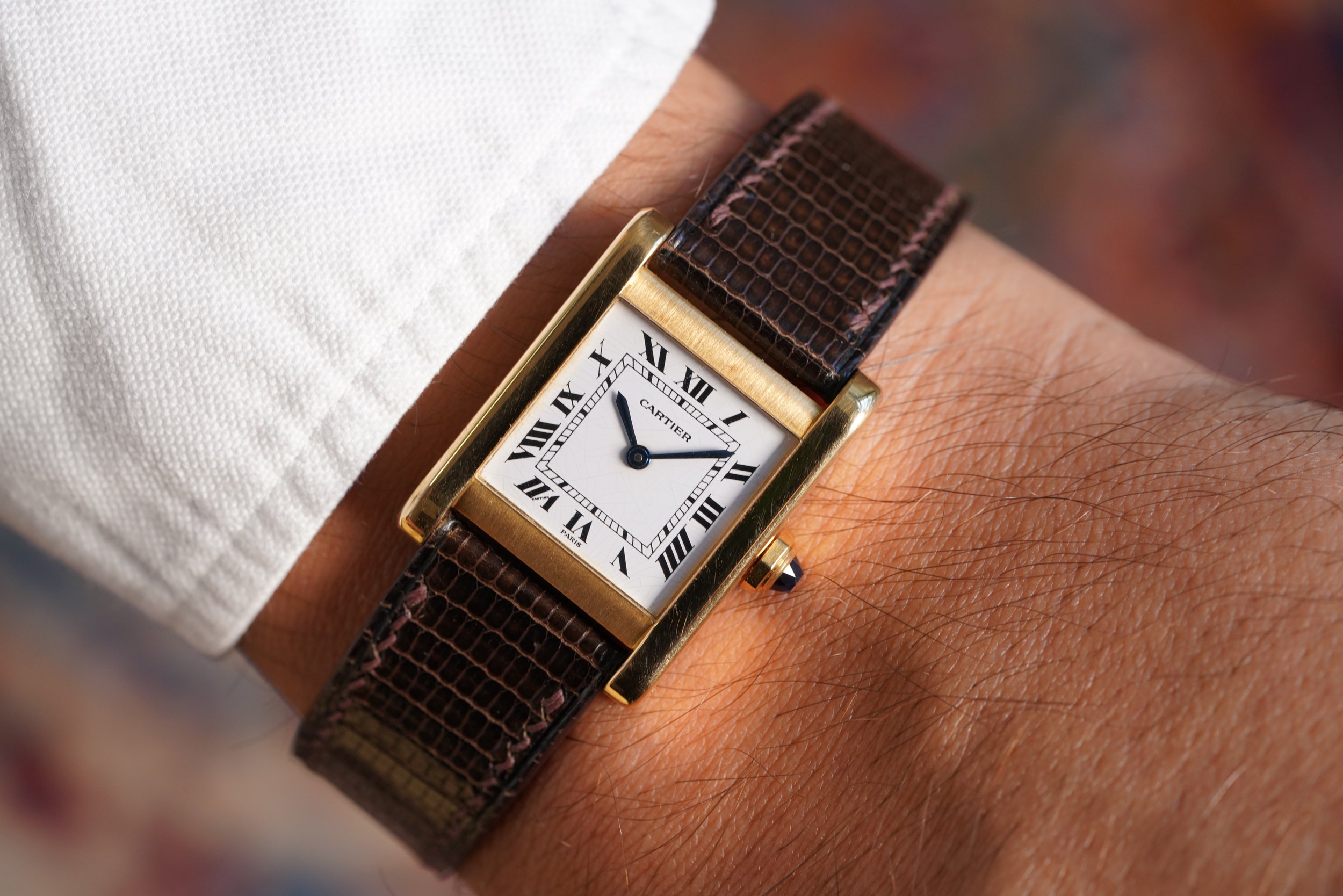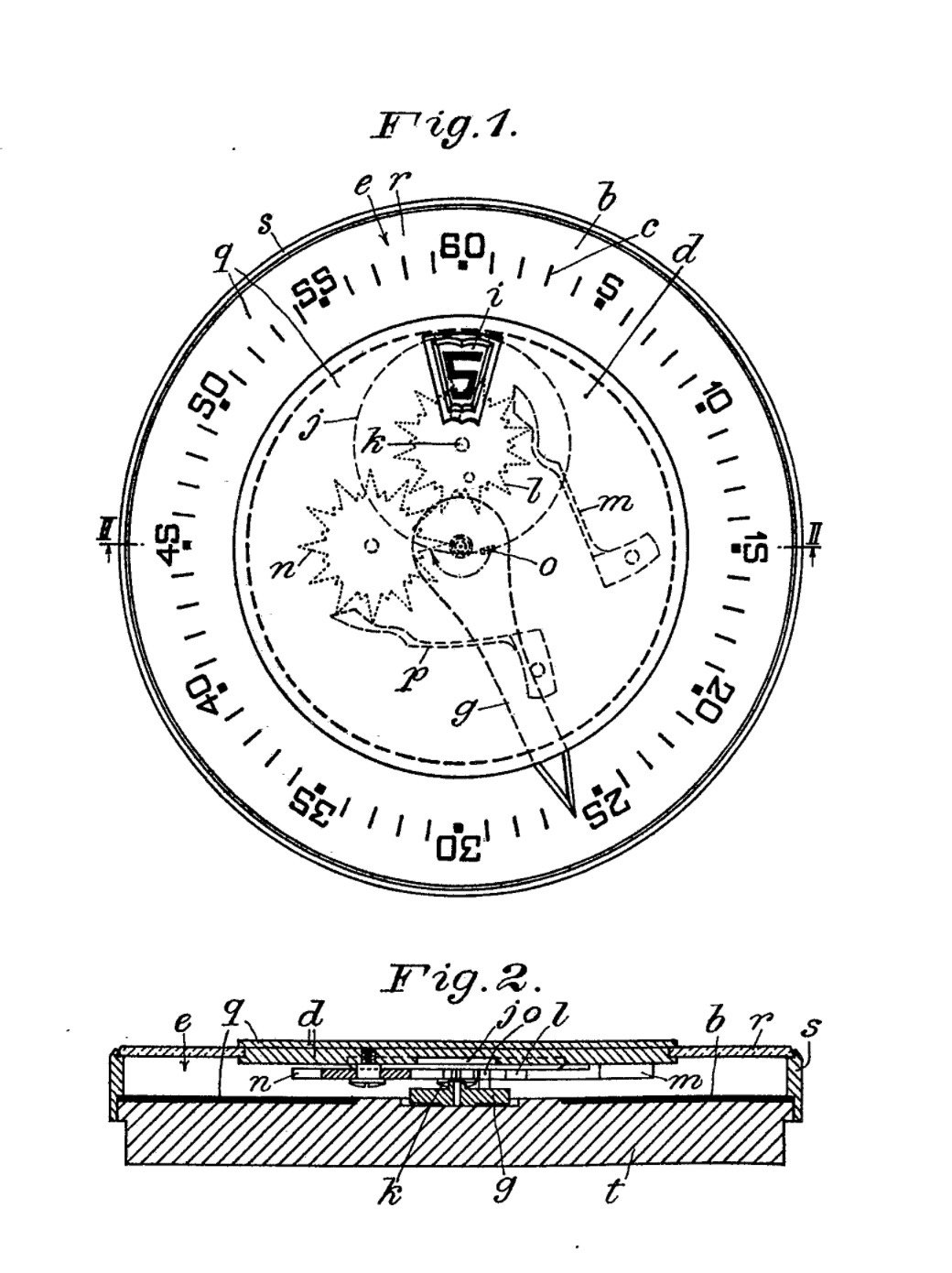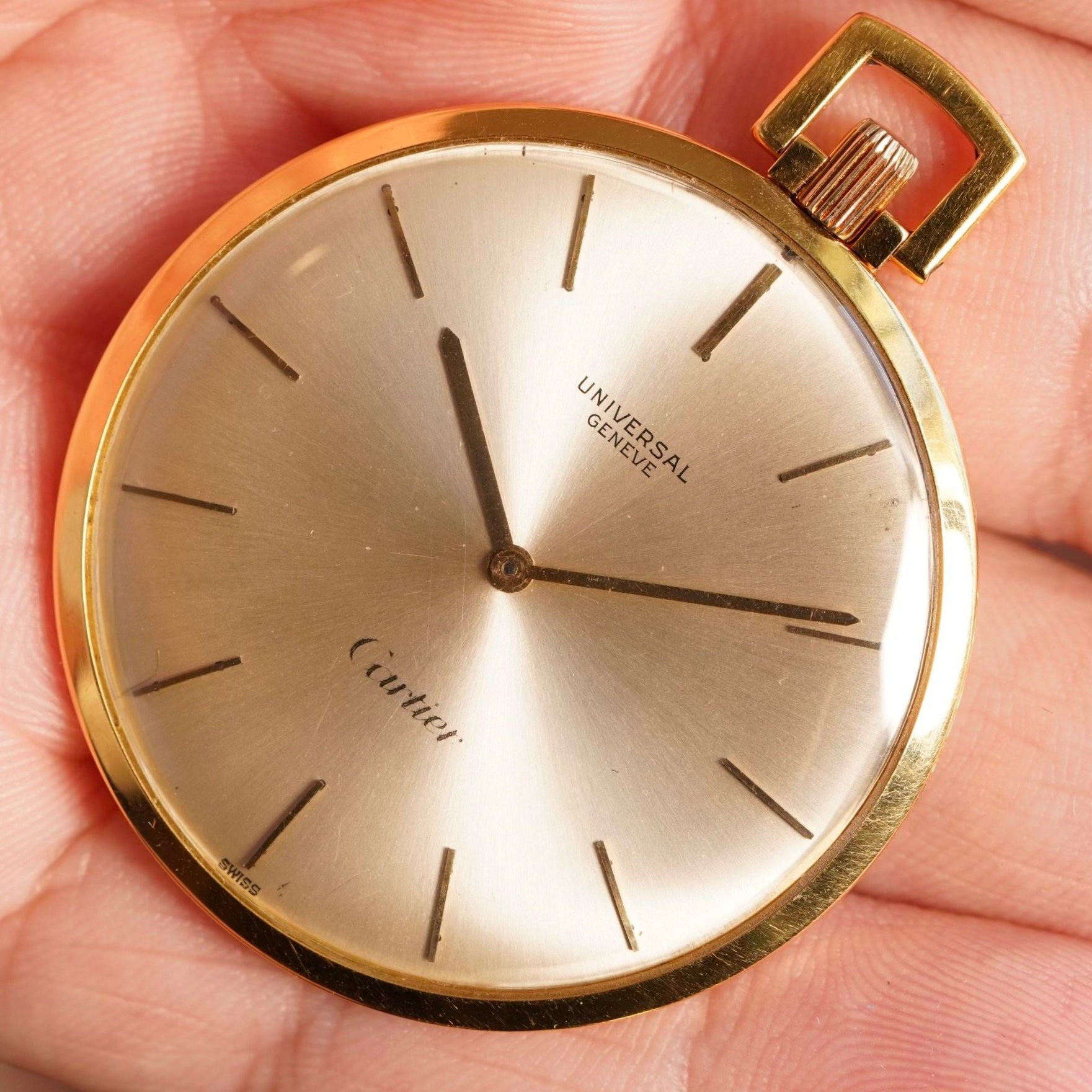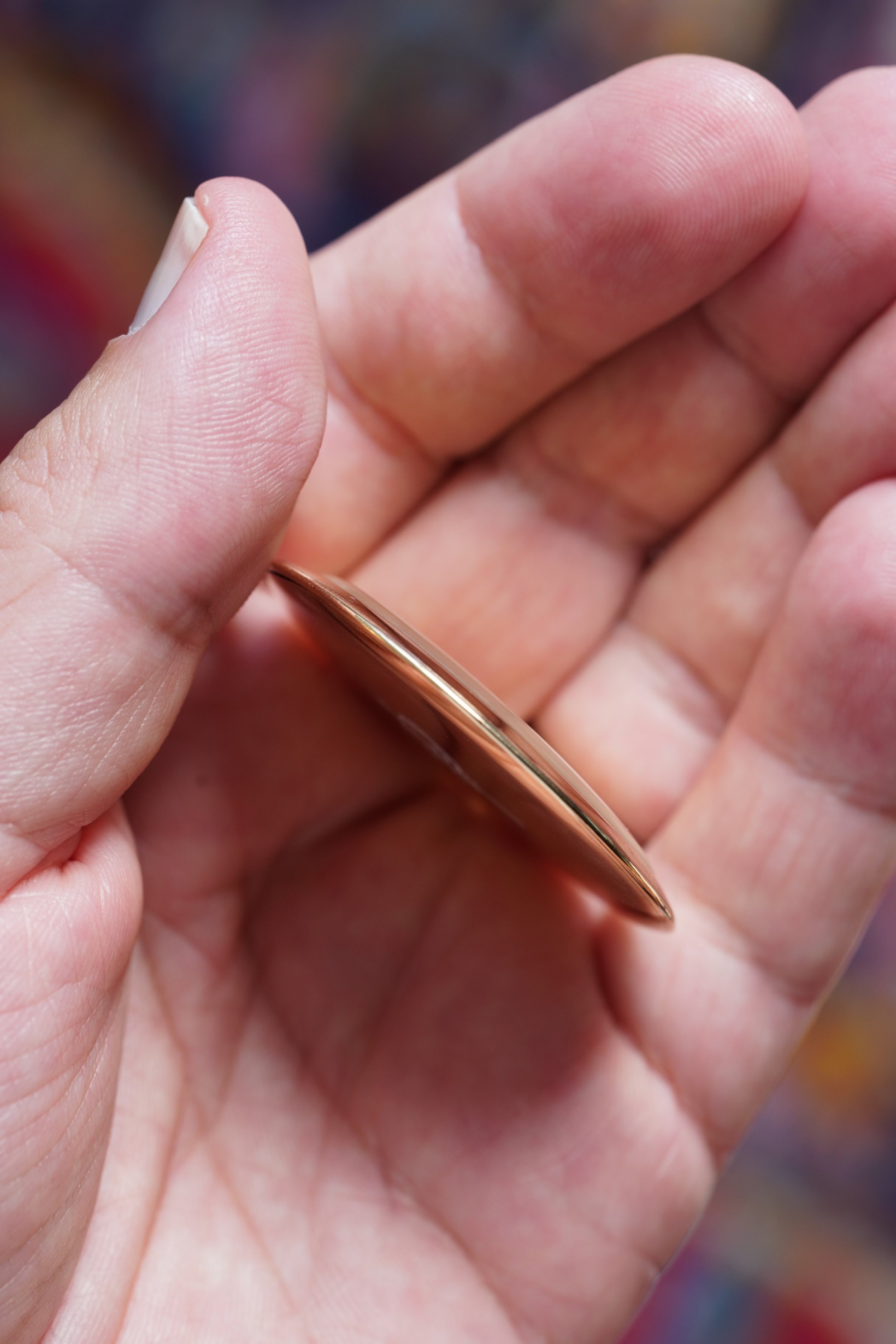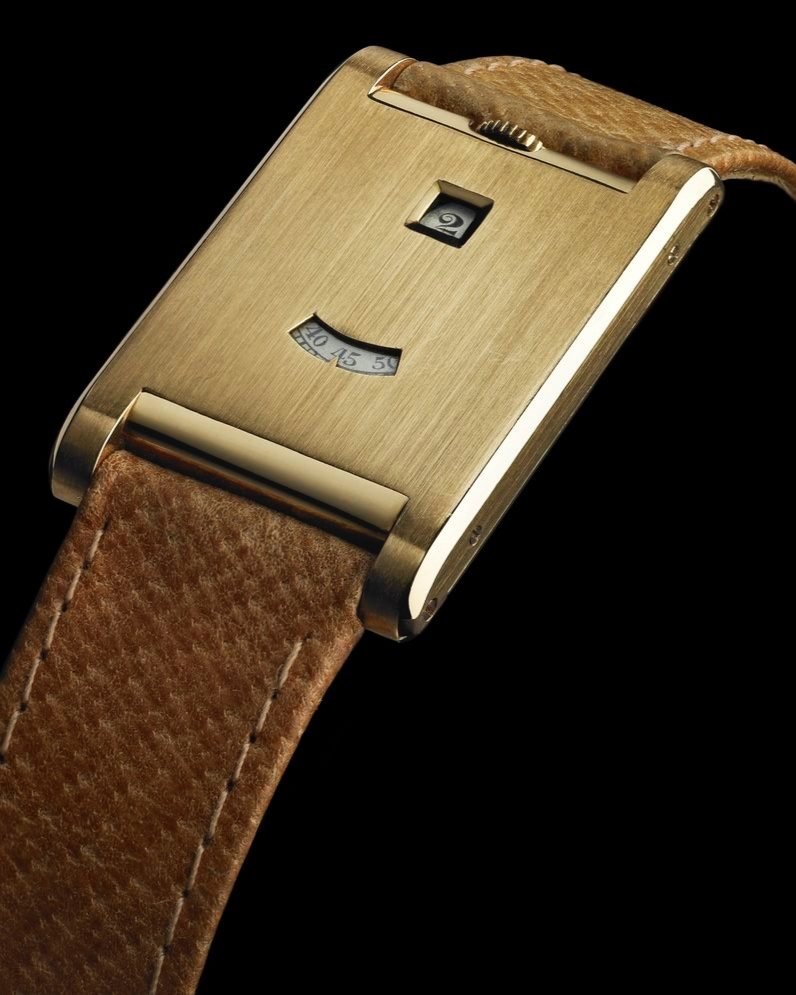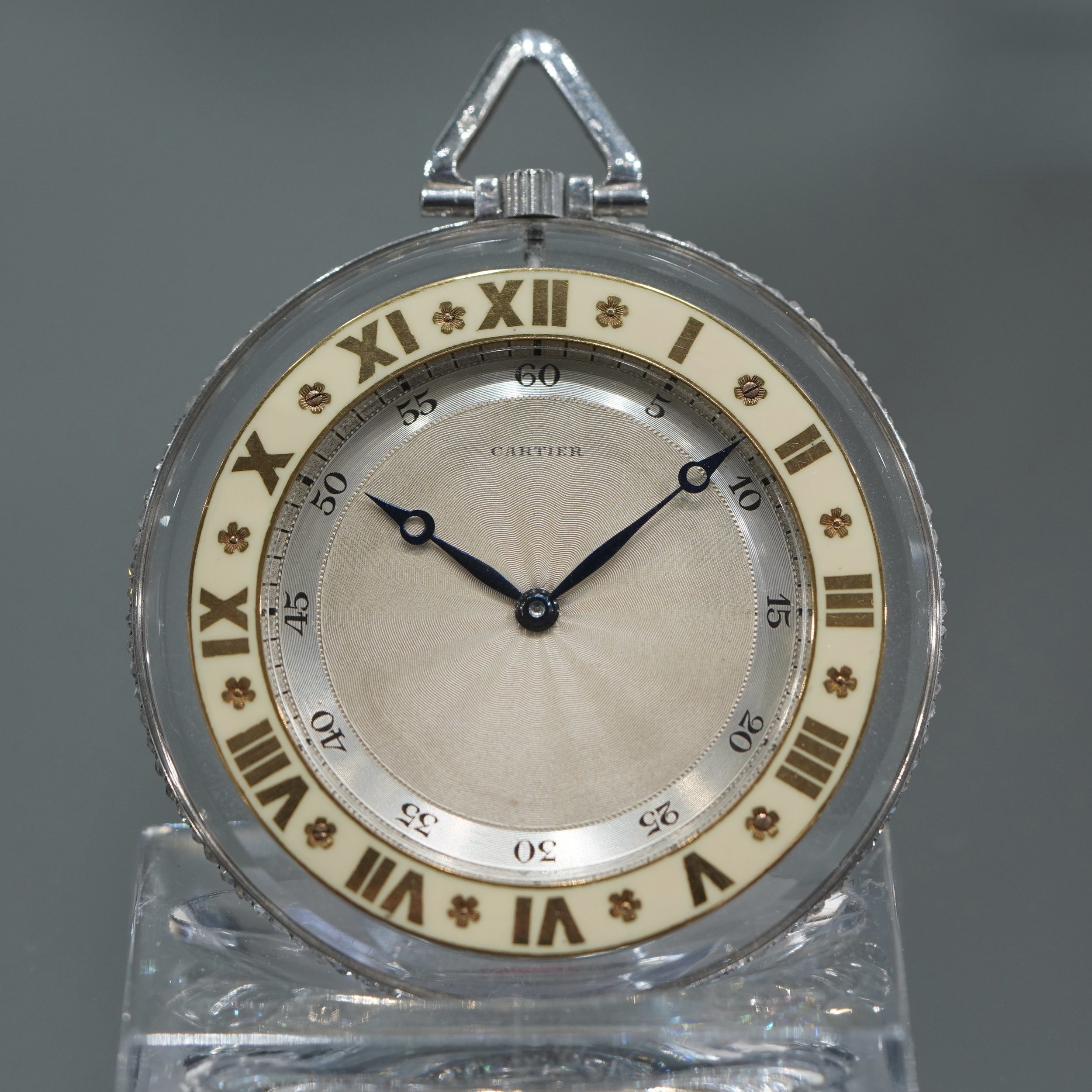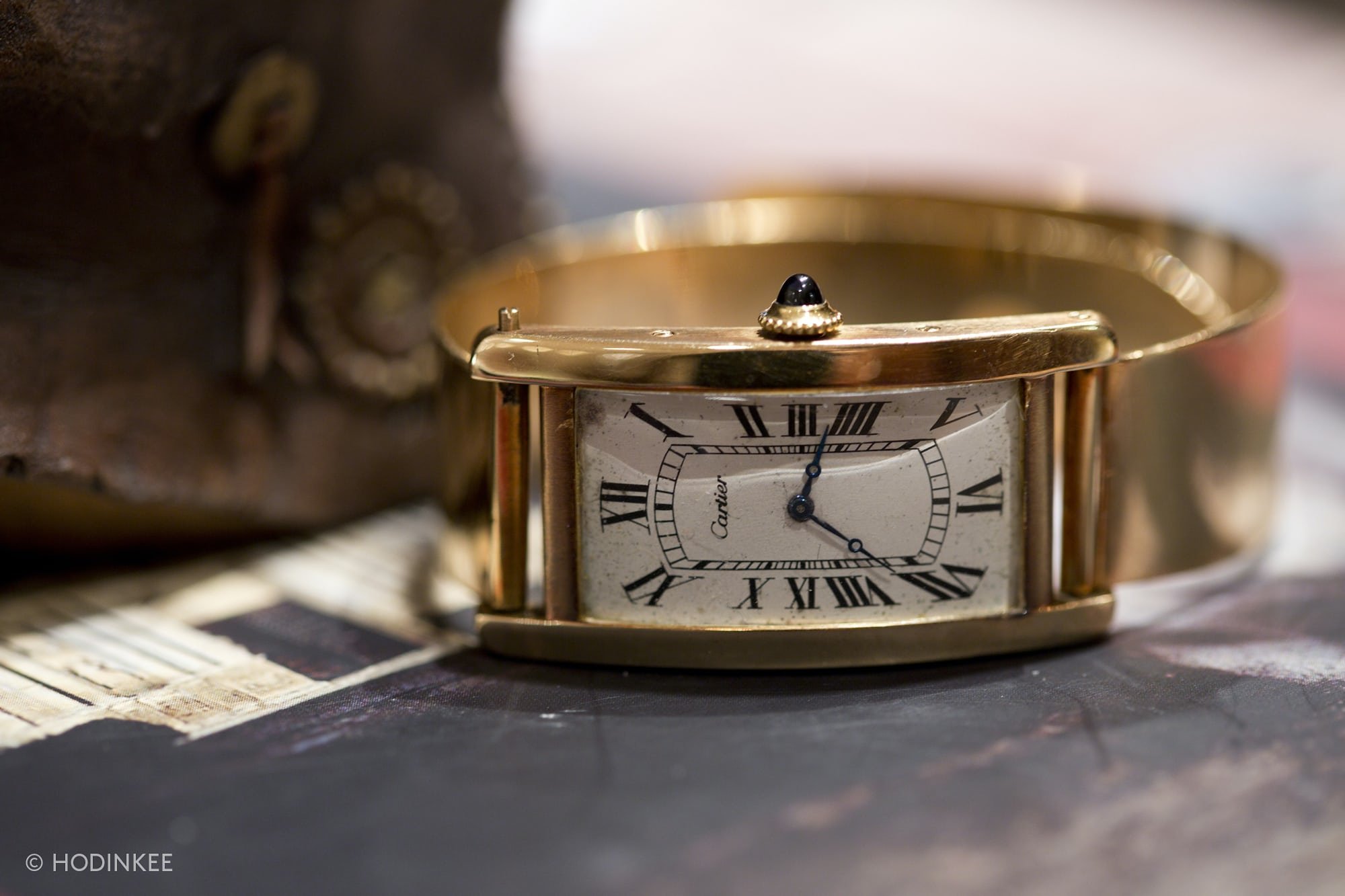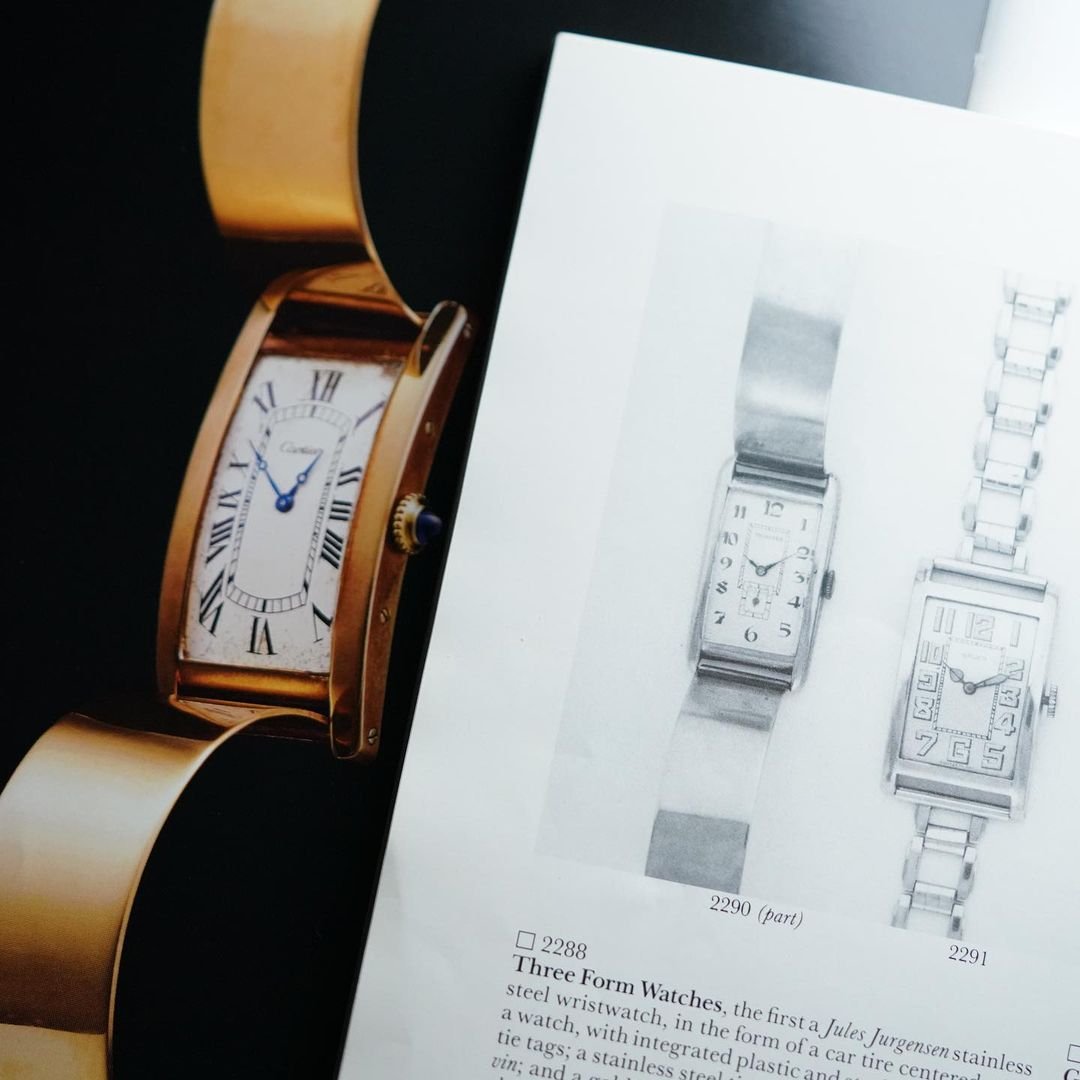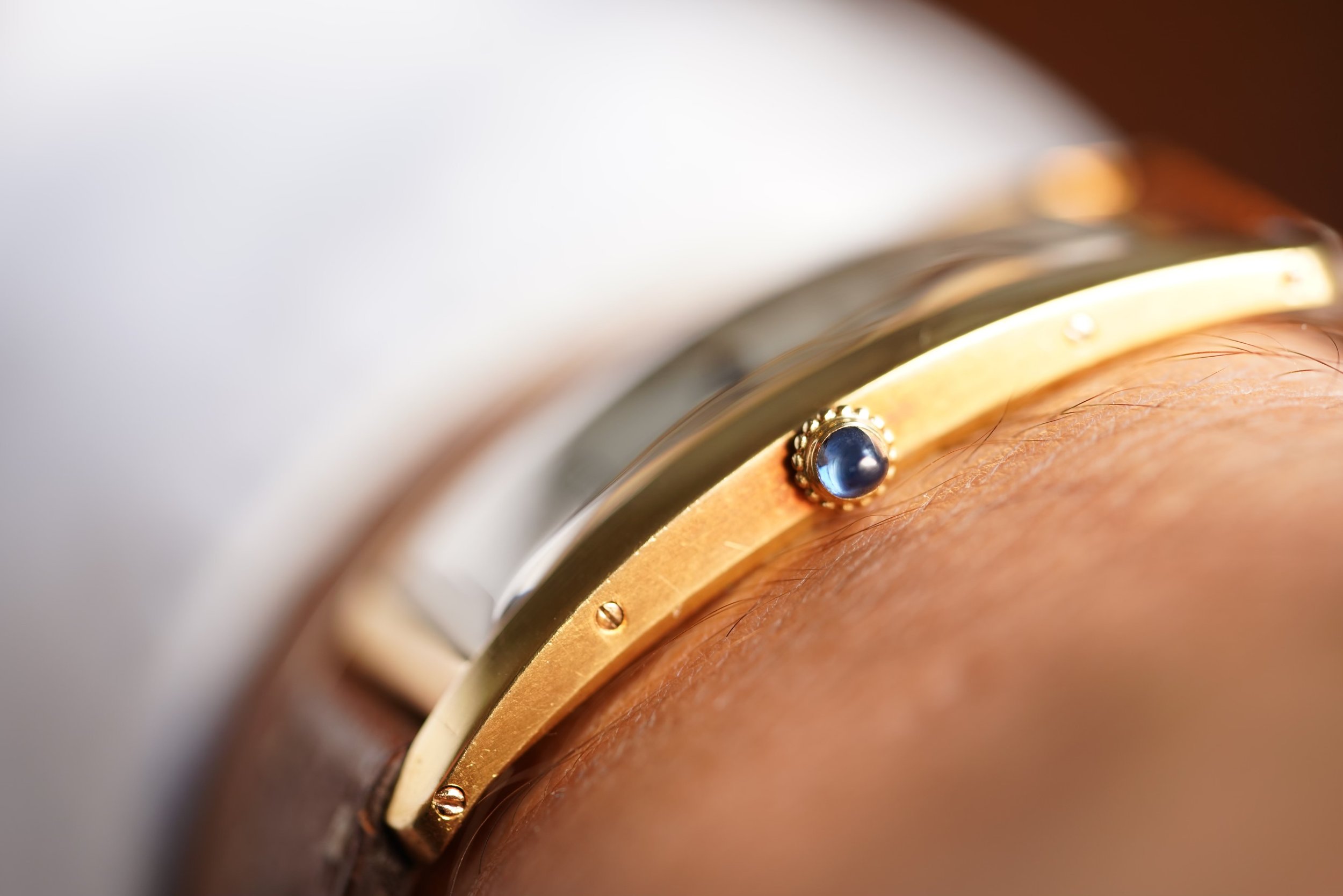My Dream Cartier Watch Collection
By Charlie Dunne
One of the biggest trends in watch collecting the last few years has been the growth of interest in Cartier watches. Driving this interest are the company’s history and their special designs. While many Cartier watches have become further and further out of reach over the past few years, I have curated my “fantasy” Cartier collection including a few aspirational timepieces, in addition to a whole bunch of examples that I do not expect to score in this lifetime.
My love for the Memovox can’t be a secret by now. I find the most practical examples to be the étanches (waterproof) cases - such as the 1950s-1960s reference E 855 or the later reference E 875 from the 1970s. However, the earliest references do present their own appeal. The reference 3151 is a two-piece case which undoubtedly requires a bit more caution in the humid environment of Florida. Its case style with the projecting lugs show a more elegant side of the Memovox. What could make it more refined? A Cartier signature! This might be more of an end-game Memovox and timepieces like these provide an awesome glimpse into the Cartier New York catalog of the 1950s.
When it comes to the Tank, I’m not overly biased. I can get on this hype train of so-called “neovintage” timepieces. While it’s not a Ballon Bleu in rose gold with a blue dial, a guy can certainly dream of owning a platinum limited edition Tank Asymètrique. Of the asymmetrical Cartier watches, most will gravitate towards the legendary Crash. Don’t get me wrong, I would take a vintage or modern one all day! However, the Asymètrique would get more action on my wrist! The model is quite a fantastic timepiece and interacting with the beaded crown is sensational. When you wind the watch, it is a nice reminder of the ultra-thin Piaget caliber 9P2.
Furthermore, the smaller Cartier Tank CPCP (Collection Privée Cartier Paris) in platinum has this same experience with its F. Piguet calibre 21. Cartier has since moved towards the in-house trend, yet I have to say there’s a great deal of charm around these models, and at some point in the future they will be rightfully looked at as classics with the same nostalgia as vintage models.
Image credit: @george.cramer
Image credit: @george.cramer
More recently, I’ve come to appreciate many more modern timepieces by Cartier. There’s a certain level of excitement that is contagious when you speak with collectors, and oftentimes this can change opinions. One noteworthy example for me is the Pasha. I couldn't have been less interested in it before 2020, as it was just not something that spoke to me on a design level. However, after paying attention to Cartier collector, and author of ‘The Gentleman’s Files’, the late George Cramer’s personal love for the 1985 “Figaro” bracelet and its “blind closure” clasp, I began to unexpectedly enjoy the look. In addition, his enthusiasm for the Pasha Day & Night, which pays tribute to several Cartier clocks from the 1930s, has become a watch I can’t help but admire.
“Almost vintage ‘Tank Louis Cartier’ in yellow gold, on teardrop bracelet. This men’s version is from the early 1990s and is smaller than the stunning current large version, that I posted a few days ago.” Image credit: @george.cramer
Image credit: SJX Watches.
Much of the conversation on social media during 2021 surrounded frustrations over limited edition watches being unobtainable, specifically the 100th Anniversary Tank Cintrée. Yet there are plenty of great watches that were approachable. One such model is the Must de Cartier. Although I won’t endorse the stiff alligator straps on these watches that cause the watches to sit inches off your wrist, they look great paired on an alternative leather strap as seen below on Kevin O’Dell’s wrist. Yes, it is quartz. The fact it is priced at a point that allows people to enter the world of Cartier timepieces under $5,000 is great. I certainly wouldn't turn my nose up to one as my first Cartier. In addition, these watches are much more attractive than the vintage Must de Cartier examples. While I may be more partial to the 100th Anniversary Tank Cintrée, the re-release has certainly elevated the model a bit and brings a fashion forward approach to the brand. Add both of these to my red Cartier suitcase!
Image credit: @theydid
If I were to aim for the more traditional Tank, one memorable timepiece I recall two years back had a slightly different design. The watch was a Cartier Tank Cornice from the late 1960s featuring the Bec D’Aigle (“Beak of the Eagle”) lugs. The case was exceptional and featured its original Paris-signed dial. A bit smaller that my ideal-sized Tank, I can’t help but include it in my fantasy draft. More often you don’t see sharp edges on Cartier cases, and this was one of those designs that is just cool to admire.
Image credit: Le temps de Cartier
A great vintage Tank Normale is without question a grail Cartier. Designed after the Renault FT-17, these are superb models with timeless appeal. Examples like the above circa late 1970s version can wear quite well at 23mm by 30mm. Small elements such as the octagonal crown and flattened cabochon are the minutia that adds up. It’s a very sober and defined look that quite literally would be perfect for most occasions.
With the recent re-introduction of the Tank Normale, it’s definitely a model I will take in either the vintage or modern. Seeing multiple collectors post about the watch at Watches & Wonders 2023 it was among the most impressive watches at the show. Although I am on the fence of the vertically brushed dial, one has to concede the watch is a faithful re-issue.
One outstanding timepiece has to be this smoked-to-coppery dial Cartier New York watch with a movement made by Girard-Perregaux. The design is similar to options in the vintage Patek Philippe models bearing a calibre 9’90, yet this one is just incredibly stylish. The lucky owner, Josh Hendizadeh (@tropicalpatina), convinced Eric to sell him a vintage C+B bracelet in 14k gold that perfectly matches the head. I’ve never seen one like it and if he foolishly sells it, I call dibs.
A bit out of place amongst the more refined timepieces, this Cartier chronograph dating to circa 1941/1942 has a tremendous story that is contrarian to most Cartier watches - a tool watch designed for elite Americans going to World War II. With a case and movement likely made by Universal Genève for LeCoultre with a VXN for Vacheron Constantin import code, it is an unusual mashup of four prestigious watch companies. I don’t expect this will appeal to most Cartier enthusiasts, however it most definitely will resonate with collectors who also have a deep appreciation for Universal Genève.
CH154726A Indicateur de temps.
Robert Cart’s iconic “Chronoscope” to this day remains an imaginative timepiece. In addition to Cartier, other manufacturers such as Vacheron & Constantin and Breguet would use this design. Although I don’t anticipate I will see many well-preserved pocket watches in the future, it is most definitely a grail. On the other hand, I also find the simple time-only pocket watches to be extremely charming, such as this example from Universal Genève in 14k gold from the 1960s
The above pocket watch is an exceptional and rare Cartier pocket watch in 18K gold. The case is a dream measuring at 45mm in diameter. These Cartier pocket watches, in addition to examples from Audemars Piguet and Jaeger-LeCoultre, were named “knife watches for their exquisite case designs and sharp edges. This watch measures at an elegant 6mm including the crystal while the case bezel descends even more narrow. The dial has an incredible guilloche texture with a “smoked” or pink tone and painted-Breguet numerals. In the subsidiary seconds, the dial is stamped with the prestigious retailer’s name. The case back features what appears to be a white enamel monogram which is shaped like a hilt of a sword.
Of course I would have to include the luminous London Tank Cintrée gifted from Fred Astaire to Felix Leach Jr among my dream Cartier collection. I made the point of wishing watches like these would be treated with more integrity instead of restored, I still appreciate the watch for its importance and for the enjoyment it brought me when writing the article.
As I wrote in early 2021:
“The common conjecture around the timepiece “owned by Fred Astaire” is a bit disappointing. Not because it is disingenuous, but rather because it neglects to acknowledge the thoughtfulness that is embodied within the timepiece. Beyond the marketing, the story of a timepiece’s pedigree should be worthy of recognition. In a period in which few people had the means of acquiring a Cartier timepiece, let alone to have been given one from Fred Astaire, there seems to be a disconnect on why the watch is more than simply something Fred Astaire “owned”.
With vintage timepieces, and in particular, timepieces with provenance, the value is not strictly on the appearance being exemplary. These are, in many people's opinions, important artifacts that deserve not only to be kept in as original condition as possible, but also accurately described. Hopefully, the Felix Leach Jr. timepiece can be seen as more than just a spectacle of luxury. By entertaining the current narrative, we miss the story at hand, and the next chapter.”
At the time of publishing the article, Auro Montanari had shared the photograph of the case back engraving for the piece. Since then, I noticed it published in the latest edition of the Cologne’s ‘Cartier Tank’ book not citing the watch belonging to Astaire.
Image credit: Phillips
Image credit: Phillips
Introduced by Cartier in 1928, the Tank à Guichet is one of the coolest timepieces in my book. Within the publication “Made For Maharajas: A Design of Princely India” the below photo is featured highlighting a Tank à Guichet purchased by Maharaja Bhupinder Singh of Patiala in 1928, which would appear to indicate the Maharaja would have been one of, if not the first clients to purchase a Tank à Guichet. On an interesting side note, this wristwatch was received the same year the Patiala Necklace was created for Maharaja Bhupinder Singh.
Another prominent client, Duke Ellington, would be photographed years later wearing a similar model. While digital (and jumphour) wristwatches were introduced by Audemars Piguet earlier in the decade, the style is synonymous with Cartier in many ways. A few variations in the Cartier Tank à Guichet from this period range from crown designation to the placement of the minute aperture.
1928 Model A Mystery Clock made by Maurice Coüet. Image credit: SJX
George Cramer’s highlights from a 2020 Cartier Exhibition 'Crystallization Of Time' in Tokyo. Image credit: @george.cramer
A Cartier watch collection would certainly be incomplete without the highly important and now more under-the-radar deck clocks. Noteworthy contenders I would be eager to add in my collection if I were eligible would be President Roosevelt iconic Victory Clock which had been given to him by Pierre Cartier on December 20, 1943. While I doubt I will be in a position anytime soon, I would most certainly have to add crystal clocks such as a Model A Mystery Clock made by Maurice Coüet. In my view, these are much more than a collectible and would be a total privilege to admire in person.
Coin watches are a genre of watchmaking I’m always excited by. Cartier has a tremendous history with these creations. Many of the most beautiful examples are made with Piaget movements, as seen in the example above. Notable examples include one owned by President Franklin D. Roosevelt. The watch was also given to him by Pierre Cartier during the Christmas of 1939. The watch currently resides in the Franklin D. Roosevelt Presidential Library & Museum.
Image credit: Phillips
Image credit: Revolution
Who could resist a pair of watches like the above two? Timepieces like these are somewhat of the outlier in design/history. These watches does not speak to Cartier per se, but more so Audemars Piguet! Beyond the signature and applied-Breguet numerals, the most compelling element of the platinum cushion-shaped model on the left is thecomplex case construction and minute-repeating movement. As for the jump-hour model in Auro Montanari’s collection, I just love the radical design. Both on fantastic vintage bracelets complete the overall look!
During a trip to Zurich, Eric Wind and I visited the Beyer Watch and Clock Museum. On view was this brilliant pocket watch!
Almost hidden in plain sight was a Cartier pocket watch dating to circa 1929 cased within a crystal exterior. The timepiece was an exquisite example that easily outranks the subpar Cartier-London wristwatches which have commanded outrageous premiums at auction over the past two years. This example features an ornate guilloche dial which is met with a brushed minute track. Also worth highlighting is the beautiful hour ring which appears to be made from ivory if I were to attempt to classify the material. The movement is stated to be by way of Le Sentier based Cartier collaborators (LeCoultre). As if the initial impression wasn’t enough, upon looking at the profile to gauge the thickness, I uncovered the channel set diamond side. Hopefully to those entranced by the inferior models which make headlines, this Parisian pocket watch will galvanize you to look beyond the hype.
“Wristwatches: History of a Century’s Development” by Helmut Kahlert, Richard Muhe, and Gisbert L. Brunner
“Positioning sketches for Arabic numerals on a Tank Asymétrique, 1930.” Source: ‘Cartier in Motion’ by Norman Foster & various authors.
In a 2020 article by A Collected Man, it is indicated that “one of the very first [Cartier Crash] models was sold to Stewart Granger”. It seems Granger had quite the penchant for Cartier as in the publication “Wristwatches: History of a Century’s Development” it is stated that the Parallelogram above also belonged to the English film star. Among the two purported asymmetrical timepieces, Granger also wore the medium Tank Cintrèe with bracelet.
Image credit: Hodinkee
While Andy Warhol owned a number of Cartiers like the various Tanks, a Baignoire, and an elongated model powered by a Universal Geneve calibre, one particular Cartier is often misrepresented online as Warhol’s watch. Illustrated within Matthew Hranek’s’ A Man & His Watch ', this watch is actually designer Ralph Lauren’s Cartier Cintrée. Despite a clarification from Lauren where he described the provenance of the gold cuff from his acquisition of an ambiguous watch at Sotheby’s 1988 auction, many platforms have mistakenly cited the Cintrée to be Warhol’s. “I was at an auction of Andy Warhol's watches and I saw this great gold cuff on one of his watches. The watch itself was junk – I don't even know what I did with it – but this cuff was amazing. So I took it to Cartier and had it sized to my wrist, and put it on this Cintrée. I love the way it looks, and this is a watch you see me wearing a lot,” said Lauren in an interview with Hodinkee. This famed gold cuff now seen on Lauren’s Cartier Cintrée was actually a part of Warhol’s gold Tavannes. The pairing is absolutely brilliant and it would be a marvelous example to own!
‘Ten Years of Watch Collecting: A Close Look at a Tastemaker’s Five Most Prized Timepieces’ by Ben Clymer featured in HODINKEE Magazine Volume 3.
“Yellow gold Tank Cintrée from the 1950s marks a significant Cartier design evolution with the octagonal flat crown and cabochon, from the old pointed crown”. Image credit Revolution ‘Call Collect: John Goldberger a.k.a. Auro Montanari’
Along with Ralph’s Tank Cintrée, I would be eager to scoop up another prominent example which was highlighted in HODINKEE Magazine Volume 3 within the article ‘Ten Years of Watch Collecting: A Close Look at a Tastemaker’s Five Most Prized Timepieces’. This is none other than Ben Clymer’s unique blue dial Cintrée from 1969!
Among the most exceptional Cartiers I have encountered was a Tank Cintrée dating to circa 1960. We came across the watch through Menta Watches in the third quarter of 2022. It was such a bold and incredible example that was just a joy to be around for the short time we had with it. Few Cartier watches can hold a candle to this well-preserved Cintrée!
Wrapping the collection up, the final nail in the coffin would be an Eight Day Cartier wristwatch. I wrote extensively on the subject within my past article ‘Each of The Known Cartier Eight Day Wristwatches’. The only example I have had the opportunity to see in person was earlier this year in Miami at the Original Miami Beach Antique Show (OMBAS). It was the one that Antiquorum sold in their Geneva: Important Modern & Vintage Timepieces in November 2021. The watch was fitted on an 18k bracelet and measured at 22mm wide and 39mm lug-to-lug. On top of this, it was sold with the watch box, which was just a fantastic thing to admire.
While this list is full of fantastic timepieces, I certainly would love to own a watch that was among so few examples produced!

